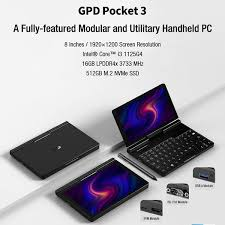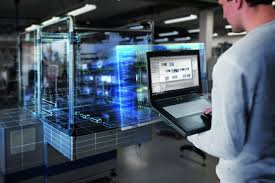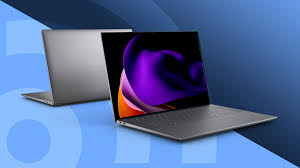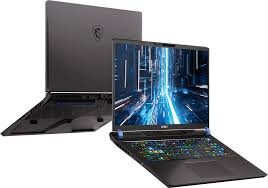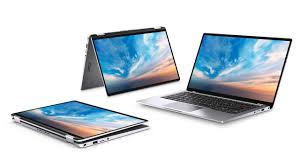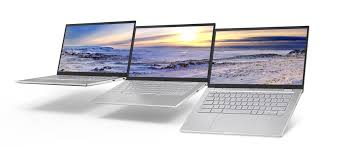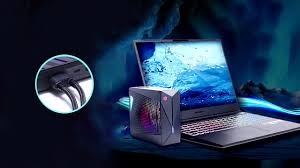The GPD Pocket 3 is a compact, 8-inch mini-laptop designed for ultimate portability and specialized mobile computing tasks . It functions as a full-featured Windows computer, packed into a body small enough to fit in a pocket, making it ideal for users on the go . 🔧 Key Features at a Glance Modular & Versatile Design: Its most distinctive…
Tag: Laptop Battery
The Ultimate Guide to Siemens SIMATIC Field PG M6: Robust Industrial Programming Device
What is a Siemens SIMATIC Field PG? Understanding Industrial Programming Devices In the world of industrial automation and control systems, Siemens SIMATIC Field PG M6 stands as a specialized, robust laptop solution designed specifically for engineering tasks in challenging industrial environments. But what exactly does “PG” mean in the Siemens context? PG stands for Programming Device – a term…
Dell XPS 16 9640 Laptop: A Powerhouse for Creators and Professionals
The Dell XPS 16 9640 emerges as a flagship laptop designed to meet the demanding needs of creative professionals and power users. With its combination of top-tier performance, a stunning display, and a sleek, portable design, it aims to be an all-in-one solution for those who refuse to compromise on power or aesthetics. This laptop is not just about…
Should I Replace My Dell Laptop Battery? UK Cost & Buying Guide (2025)
A new battery can breathe new life into your Dell laptop without breaking the bank. When your Dell laptop starts struggling to hold a charge, you’re faced with a decision: replace the battery or replace the entire computer. For most users, replacing the battery is a cost-effective solution that can significantly extend your laptop’s lifespan. This guide…
Unleash Your Potential: Is the Jumper UTL-3168144-2S Your Next Perfect Laptop?
In the bustling world of technology, finding a laptop that strikes the perfect balance between performance, portability, and price can feel like a daunting task. You’re bombarded with options, but so many of them either break the bank or compromise on the features you truly need. What if there was a device that delivered a solid, reliable computing experience…
MSI Vector HX Series: Unleash Ultimate Gaming Performance with Intelligent Power
The MSI Vector HX series represents the pinnacle of gaming laptop engineering, designed for enthusiasts who refuse to compromise on performance. Whether you’re a competitive esports player, a content creator, or a tech enthusiast, these machines pack desktop-level power into a portable form factor. In this comprehensive review, we’ll explore what makes the Vector HX series stand…
Lenovo Tab P12 Pro: The Ultimate Android Tablet for Productivity and Entertainment
In the competitive world of high-end tablets, the Lenovo Tab P12 Pro (Model: TB-Q706F) stands out as a powerful, versatile Android device designed to meet the demands of both professionals and entertainment enthusiasts. With its stunning display, impressive performance, and thoughtful accessories, this tablet redefines what users can expect from a modern mobile device. Unboxing the Lenovo…
Dell Latitude 7400 2-in-1: The Ultimate Business Laptop for Professionals on the Go
In today’s fast-paced business world, professionals need a laptop that can keep up with their demanding schedules without compromising on performance, security, or versatility. The Dell Latitude 7400 2-in-1 is designed to meet these exact needs, offering a powerful, flexible, and reliable computing experience. Whether you’re working from the office, at home, or on the go, this laptop is…
The Ultimate ASUS Chromebook Showdown: C433T vs. C425TA – Which Should You Choose?
In the world of Chromebooks, ASUS has established itself as a leading brand that combines stylish design with impressive performance. Two of their most popular models—the ASUS Chromebook C433T and the C425TA—have been making waves in the market. But which one is right for your needs? In this comprehensive comparison, we’ll dive deep into the features, specifications, and…
Mechrevo F1: The Ultimate lightweight Powerhouse Redefining Performance
In the world of ultra-lightweight laptops, finding the perfect balance between performance, portability, and price can feel like an impossible quest. Enter the Mechrevo F1, a game-changing notebook that shatters expectations and sets new standards for what a compact laptop can achieve. With its impressive specs and innovative design, this device is poised to revolutionize your mobile computing…
